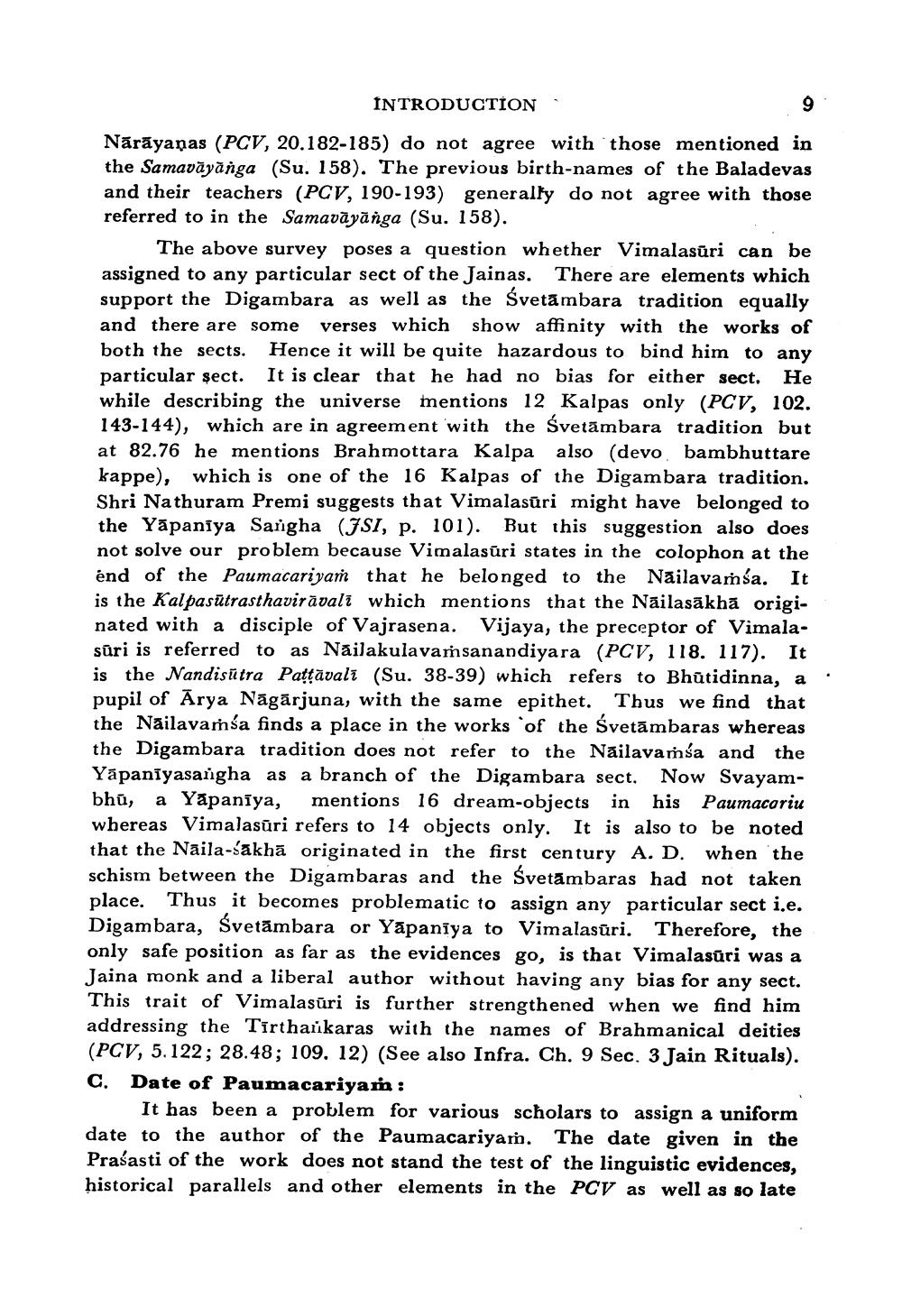________________
INTRODUCTION
9
Nārāyaṇas (PCV, 20.182-185) do not agree with those mentioned in the Samaväyānga (Su. 158). The previous birth-names of the Baladevas and their teachers (PCV, 190-193) generally do not agree with those referred to in the Samavāyānga (Su. 158).
The above survey poses a question whether Vimalasūri can be assigned to any particular sect of the Jainas. There are elements which support the Digambara as well as the Svetāmbara tradition equally and there are some verses which show affinity with the works of both the sects. Hence it will be quite hazardous to bind him to any particular sect. It is clear that he had no bias for either sect. He while describing the universe mentions 12 Kalpas only (PCV, 102. 143-144), which are in agreement with the Svetāmbara tradition but at 82.76 he mentions Brahmottara Kalpa also (devo bambhuttare kappe), which is one of the 16 Kalpas of the Digambara tradition. Shri Nathuram Premi suggests that Vimalasūri might have belonged to the Yāpaniya Sarigha (FSI, p. 101). But this suggestion also does not solve our problem because Vimalasūri states in the colophon at the end of the Paumacariyam that he belonged to the Nailavamsa. It is the Kalpasūtrasthavirāvali which mentions that the Nailasākhā originated with a disciple of Vajrasena. Vijaya, the preceptor of Vimalasūri is referred to as Nailakulavamsanandiyara (PCV, 118. 117). It is the Nandisütra Pattāvali (Su. 38-39) which refers to Bhūtidinna, a. pupil of Arya Nāgārjuna, with the same epithet. Thus we find that the Nailavamsa finds a place in the works of the Svetāmbaras whereas the Digambara tradition does not refer to the Năilavarśa and the Yapanīyasarigha as a branch of the Digambara sect. Now Svayambhū, a Yapaniya, mentions 16 dream-objects in his Paumacariu whereas Vimalasūri refers to 14 objects only. It is also to be noted that the Naila-sakhā originated in the first century A. D. when the schism between the Digambaras and the Svetāmbaras had not taken place. Thus it becomes problematic to assign any particular sect i.e. Digambara, Svetāmbara or Yapaniya to Vimalasuri. Therefore, the only safe position as far as the evidences go, is that Vimalasūri was a Jaina monk and a liberal author without having any bias for any sect. This trait of Vimalasūri is further strengthened when we find him addressing the Tirthaikaras with the names of Brahmanical deities (PCV, 5.122; 28.48; 109. 12) (See also Infra. Ch. 9 Sec. 3 Jain Rituals). c. Date of Paumacariyam:
It has been a problem for various scholars to assign a uniform date to the author of the Paumacariyar. The date given in the Prasasti of the work does not stand the test of the linguistic evidences, historical parallels and other elements in the PCV as well as so late




